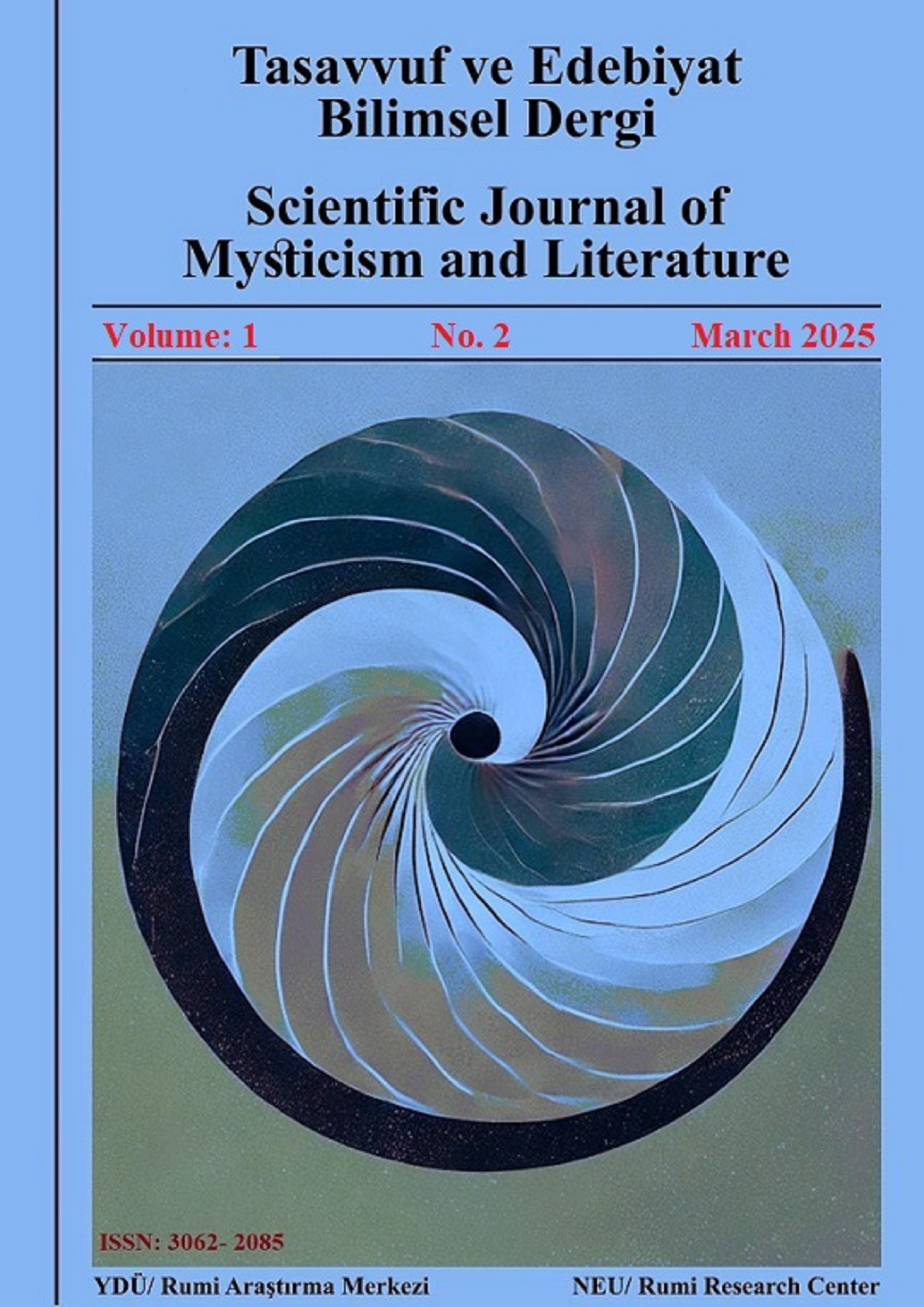Sufi Sema and Hindu Kathak Dance: The Rotations’ Semantic Layers through History
Sufi Sema ve Hindu Kathak Dansı: Tarih Boyunca Rotasyonların Semantik Katmanları
DOI:
https://doi.org/10.32955/neujsml202512975Abstract
Sema, a sacred ritual in Sufism, consists of continuous and non-stop spinning around the axis of the body, symbolizing a spiritual journey toward unity with the Divine. A similar ancient ritual, Kathak, is performed in Hinduism, which, like Sema, has its roots in the worship of the world's creator. Both rituals share similarities in form and content, reflecting profound mystical and epistemological themes. This study employs iconological analysis, a method rooted in Erwin Panofsky's framework, to interpret the symbolic components of the rotations in Sema and Kathak. Iconology is applied in three stages: (1) pre-iconographic analysis, identifying the physical movements and visual elements; (2) iconographic analysis, examining the cultural and religious contexts of the rituals; and (3) iconological interpretation, uncovering the deeper symbolic meanings embedded in the rituals' forms and motions.
The findings reveal that Sema and Kathak symbolize the cosmic order, the cyclical nature of existence, and the seeker’s journey toward spiritual enlightenment. The rotations in both rituals are interpreted as representations of the soul’s ascent and the eternal connection between the human and the Divine. Furthermore, the study hypothesizes that Sema and Kathak's similarities in form and meaning may be attributed to historical and cultural exchanges between Sufism and Hinduism, particularly during periods of shared geographical and philosophical interactions. The research concludes that these rituals have mutually influenced each other, not only in their physical expressions but also in their symbolic and spiritual dimensions.
Keywords: Sema of Rumi, Kathak Dance, Iconology, Sufism, Hinduism


